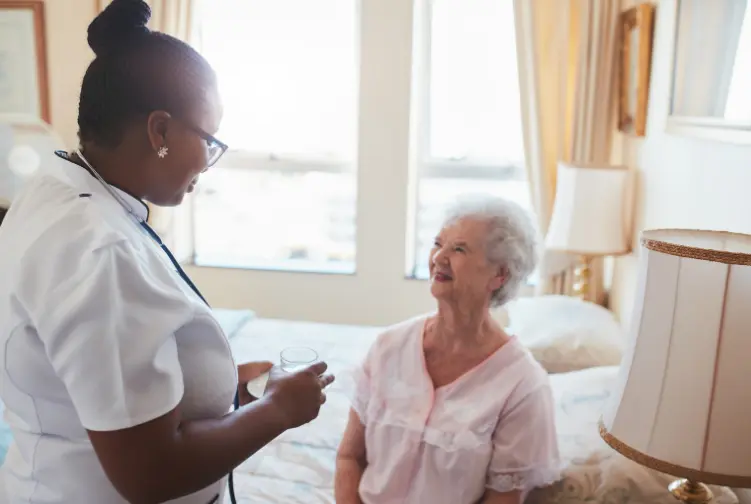Falls prevention is a hot topic in healthcare at the moment, and we can understand why. The matter was discussed in the House of Lords in November 2017, with all those in attendance agreeing that falls prevention should be taken more seriously.
Care homes, hospices, hospitals, and nursing homes in particular should be taking steps to ensure that their patients and residents have minimal chance of falling. Not only because of how costly falls can be, but also because of how it can affect the person’s quality of life.
Here are 3 things you can use to help prevent falls in multi-user healthcare environment.
1/ Ultralow Beds
Low level beds have been specifically designed to reduce the distance between the mattress platform and the floor, therefore making any possible falls less likely to cause significant injuries. The bed simply descends to a lower height, and gives the user peace of mind that if they do fall, it won’t be as far to the floor.
But this can still cause problems. The drop from the bed to the ground will still hurt, and it may leave the individual feeling fairly embarrassed and sore.
Ultralow beds go even closer to the ground, so that the distance between the mattress and the floor is so small, that it barely even feels like a fall. For example, the LowLine bed goes down to just 10cm from the floor, which is barely even the depth of a step. And when used with floor mats, there’s very little risk of injury.
2/ Rise and Recline Chairs
Another area where falls can often occur is when standing up from a chair. Reduced leg strength and balance can really make it difficult to get to a standing position, even from a high back chair with decent armrests. Understandably, this can cause more falls because there isn’t enough support to get yourself stood up.
Rise and recline chairs move to support the user as they get to a standing position. The rise action can help to lift the individual, giving them a chance to find their balance and footing, giving them peace of mind that they can stand with stability.
This extra movement and support may be subtle, but it truly does help to prevent falls from occurring when patients and residents try to stand up from a seated position.
3/ Built-in Sensors
Of course, there is always the issue (particularly in multi-user environments) of patients and residents being alone and falling over. What happens then? How can we help stop falls — or anticipate them with enough time to stop them?
Fortunately, there is something that can help with this. Built-in pressure sensors. They can be fitted in beds and chairs, and will alert staff when the individual has got out of the chair or bed, giving the carer a chance to go find them and make sure that they are not at risk of falling over.
The Arene Mk II rise and recline chair can be supplied with sensors built into the seat cushion. This will then alert staff when the patient/resident has got up. It means that staff don’t have to sit and watch, waiting for the person to move. Instead, they can be notified through a nurse call system.
Similarly, the Eclipse and Liberta beds can be supplied with a pressure sensor that links to the nurse call system.
Summary
There are plenty of other things to mention when it comes to preventing falls in multi-user care environments; making sure there are no loose items on the floor, clearly defined edges of steps, no loose items, etc. But when it comes to equipment, these are 3 key things to keep an eye out for. So if you’re looking for ways to help prevent falls, please get in touch with us and find out how we can help.

